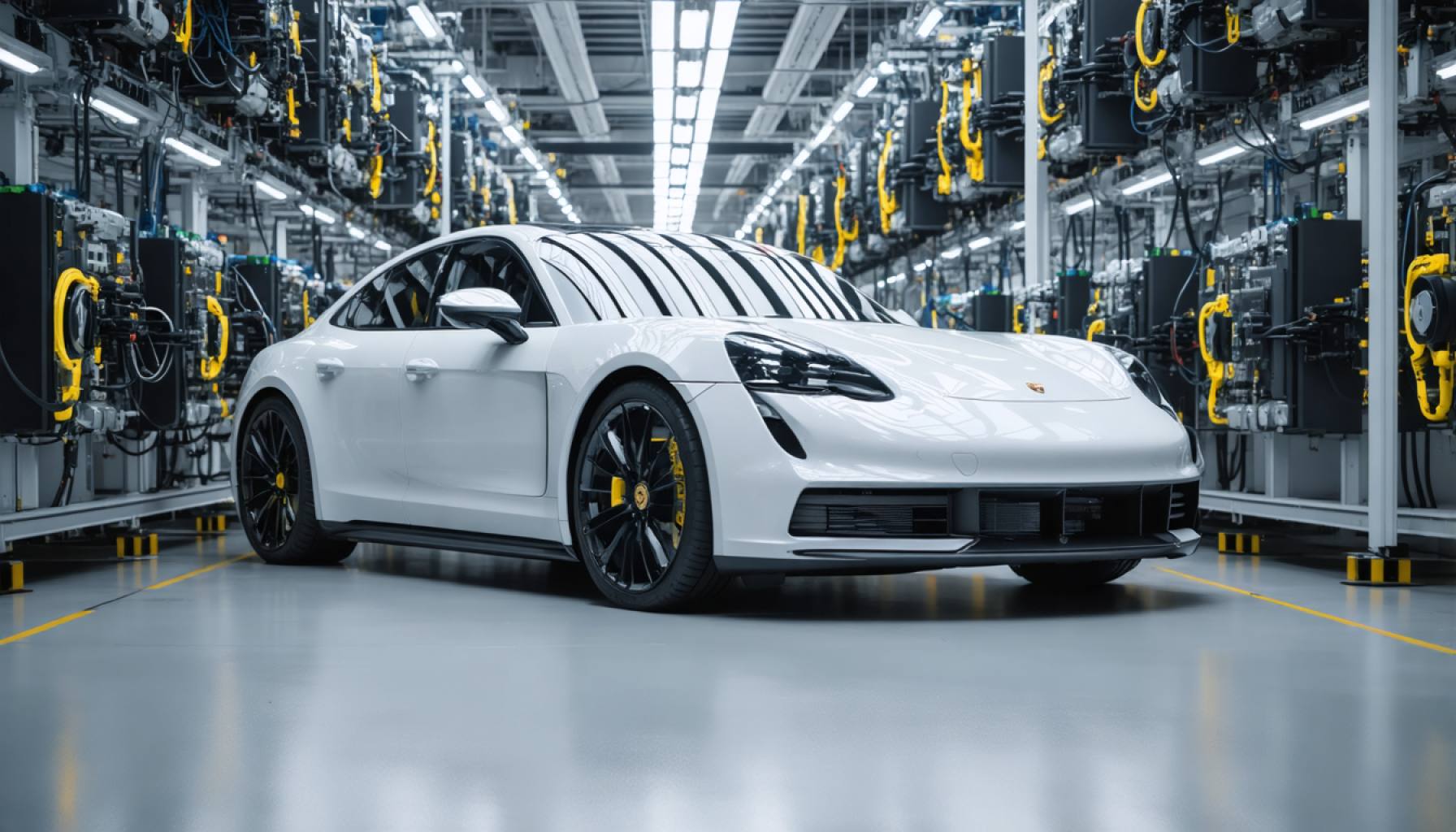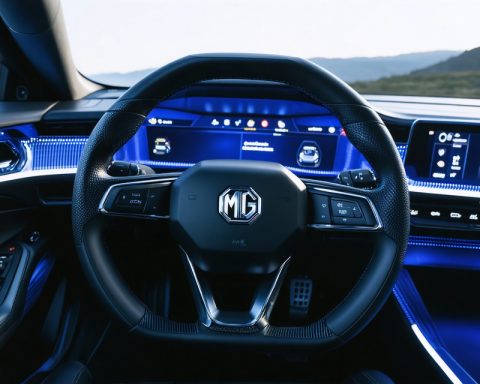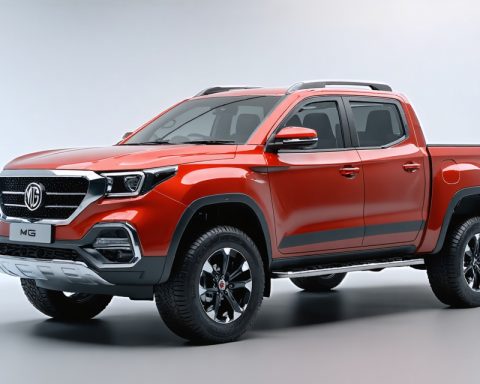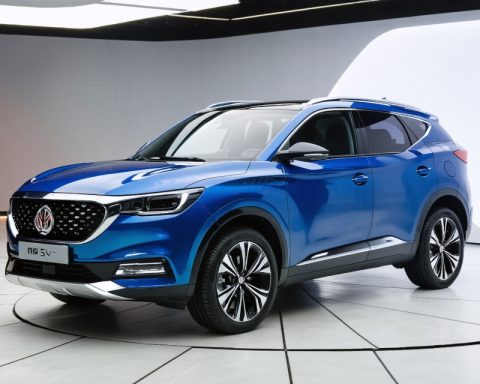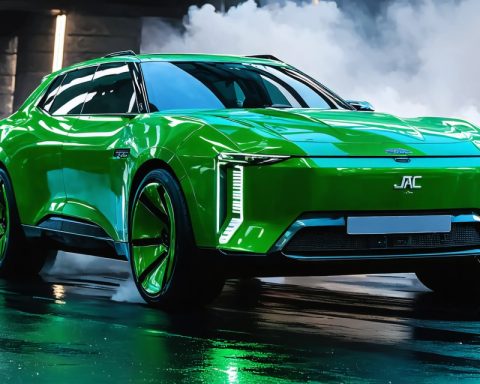- Porsche leads in EV battery recycling with a groundbreaking pilot project, transforming waste into valuable resources.
- The process involves shredding used batteries to extract “black mass,” yielding nickel, cobalt, manganese, and lithium.
- Over 65 tonnes of granulate processed, setting a new resource recovery precedent to secure future mobility foundations.
- Extracted materials achieve high purity levels, suitable for new battery cell production to meet Porsche’s high standards.
- An upcoming project phase includes manufacturing battery cells with reclaimed materials, aligning with EU regulations by 2031.
- Barbara Frenkel emphasizes Porsche’s closed-loop recycling approach, reducing environmental impact and ensuring resource traceability.
- Porsche’s initiative strengthens its position as a leader in sustainable manufacturing and innovation.
The gentle hum of high-voltage motors propels Porsche’s ambition beyond mere luxury. A groundbreaking pilot project, spearheaded by this iconic name in automotive excellence, is transforming how we perceive the life cycle of electric vehicle (EV) batteries. As the world inches closer to a sustainable future, Porsche is breaking new ground with a revolutionary endeavor in recycling these powerhouses, turning what once was waste into invaluable resources.
Picture an elaborate yet precise dance, where lifeless EV batteries whirl through a mechanical symphony of shredders. The once-mighty power cells metamorphose, stripped to their elemental essence, yielding a dark granular treasure known in the industry as “black mass.” It is from this seemingly nondescript material that Porsche extracts the core ingredients—nickel, cobalt, manganese, and lithium—crudely concealed yet utterly precious.
By processing over 65 tonnes of this raw granulate from its development vehicles, Porsche is setting a precedent in the strategy of resource recovery. This effort is far from just boosting their ecological profile; it’s about safeguarding the very foundation of future mobility. Without these key elements, the high-performance genes seething within every Porsche would be at risk.
Once the “black mass” has been redefined into its constituent elements, the purity levels achieved ensure these materials can confidently underpin new battery cells. Porsche insists that maintaining rigorous standards of consistency and cleanliness is non-negotiable, as these are critical to aligning with the sophisticated artistry that their vehicles command.
The journey doesn’t end here. In the project’s ambitious third phase, Porsche plans to manufacture battery cells incorporating a defined quotient of these reclaimed materials, putting them to the test in prospective models. This embodies not just compliance with inevitable EU regulations—demanding more recycled content by 2031—but a bold stride toward a circular economy, where sustainability is not an endpoint but a perennial cycle.
Barbara Frenkel from Porsche’s Executive Board highlights that this strategic initiative is woven into their core ethos. By integrating a closed-loop recycling approach, Porsche not only minimizes environmental impact but also builds resilience against the geopolitical tremors in raw material markets. It’s a clever, calculated move towards self-reliance and auditing traceability in an era where resources are as contested as they are vital.
This forward-thinking approach reinforces Porsche’s stature as a paragon of sustainable manufacturing. The early introduction of this recycling pilot further cements the automaker’s standing at the forefront of innovation, ensuring Porsche isn’t just part of the future—it’s actively engineering it. In doing so, Porsche not only reflects its august heritage but also charts a visionary course where the horizon is as green as it is aspirational.
Porsche’s EV Battery Recycling Revolution: What It Means for the Future of Green Mobility
Enhancing Sustainability Through Battery Recycling
Porsche’s commitment to sustainability is more than just a nod to environmental trends; it is a comprehensive overhaul of how electric vehicle (EV) batteries are handled from creation to disposal. This pilot project introduces a systemic change, emphasizing a closed-loop recycling system that has significant implications for the automotive industry and beyond.
How Does Porsche’s Recycling Process Work?
1. Collection of End-of-Life Batteries: Batteries from development vehicles and possibly post-consumer vehicles are collected for recycling.
2. Mechanical Breakdown: These batteries are processed through a series of shredders, reducing them to a material known as “black mass.”
3. Extraction of Core Materials: From this black mass, key materials such as nickel, cobalt, manganese, and lithium are extracted.
4. Purification and Re-use: Ensuring high purity levels, these materials are then repurposed to develop new battery cells.
Market Forecasts & Industry Trends
The global EV battery recycling market is expected to grow significantly. According to a report by MarketsandMarkets, the market size is projected to grow from USD 1.7 billion in 2020 to USD 5.3 billion by 2025. This growth is driven by increased demand for electric vehicles and the heightened need for sustainable waste management solutions.
Pros & Cons Overview
Pros:
– Environmental Benefits: Reduces the need for new raw materials, minimizing mining impacts.
– Cost Efficiency: Long-term potential to reduce costs associated with battery production.
– Supply Chain Security: Enhances resilience by diversifying resource supply.
Cons:
– Initial Costs: High initial investment in recycling technology and infrastructure.
– Technical Challenges: Extraction processes must be developed and refined for maximum efficiency.
Real-World Use Cases
Porsche’s initiative could serve as a model for other automotive companies. By showcasing the feasibility and benefits of closed-loop recycling, Porsche hopes to inspire industry peers to adopt similar practices, ultimately driving industry standards upward.
Controversies & Limitations
While the initiative is groundbreaking, it has its critics who question the feasibility of large-scale implementation. The recovery rate of precious metals and the energy consumption of recycling processes remain challenges that Porsche and peers need to address.
Security & Sustainability
This recycling approach not only positions Porsche as a sustainable leader but also mitigates risks associated with geopolitical tensions over raw material supplies. By securing access to critical resources, Porsche can maintain production continuity even amid market disruptions.
Actionable Recommendations
– For Consumers: When purchasing an electric vehicle, inquire about the manufacturer’s recycling practices. Choosing companies that prioritize sustainability aligns with environmental principles.
– For Industry Professionals: Invest in R&D focused on improving recycling efficiency to reduce costs and energy consumption in the long run.
– For Policymakers: Encourage legislation that supports recycling infrastructure development and standardizes recycling processes across industries.
Conclusion
Porsche’s venture into EV battery recycling is not only a stride toward sustainability but also a strategic maneuver to safeguard future manufacturing capabilities. This initiative will likely stimulate further innovations and transformations across the automotive sector, underscoring the essential role of sustainable practices in the industry’s future growth.
For more information on Porsche’s sustainability initiatives, visit the official Porsche website.
